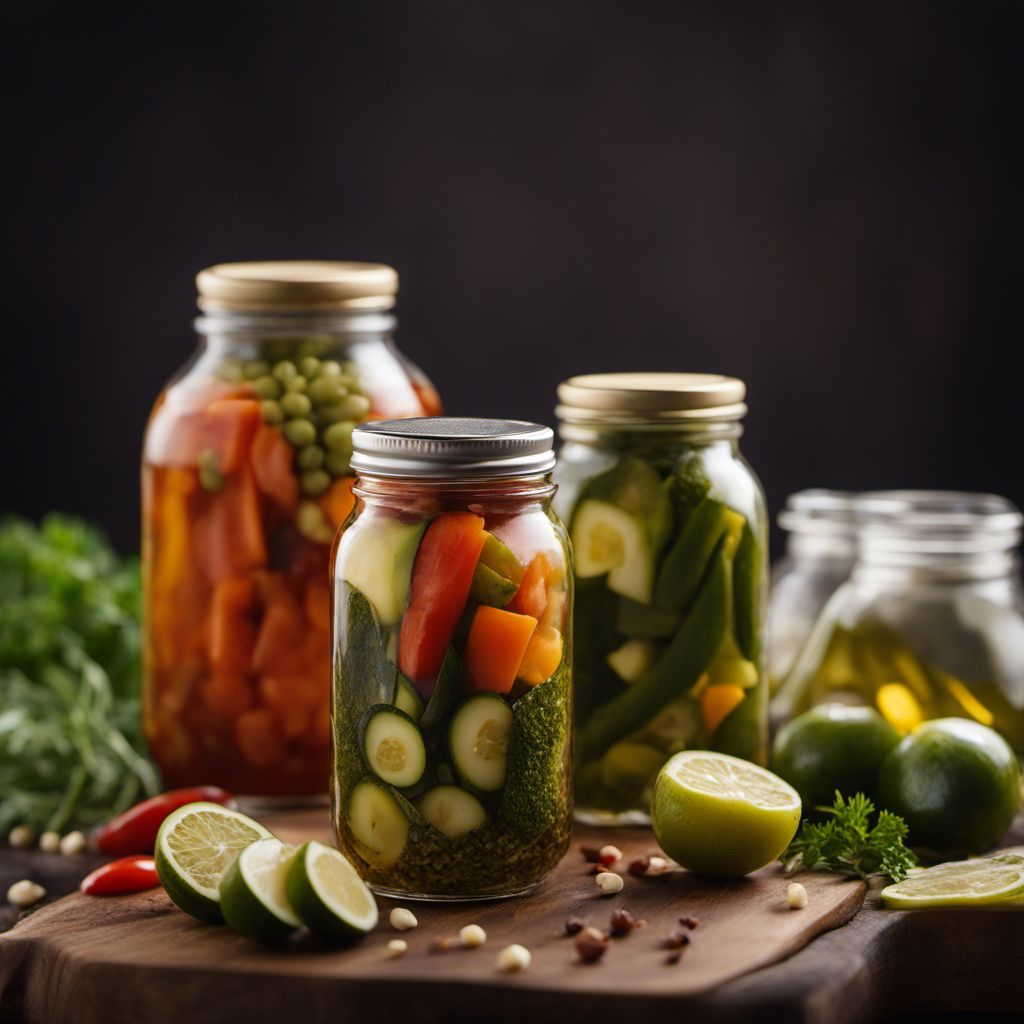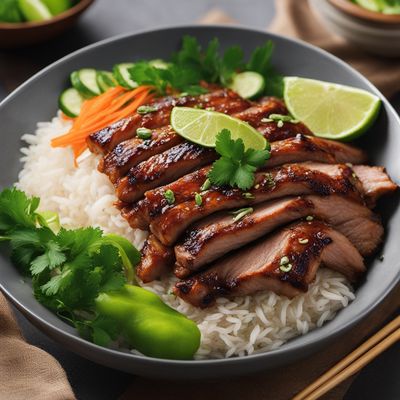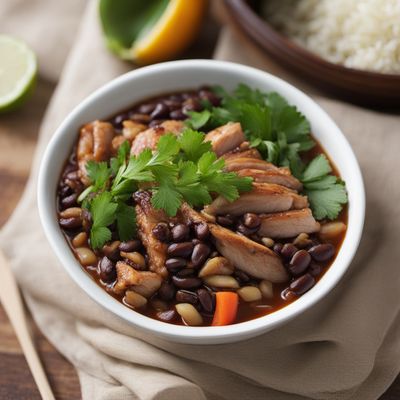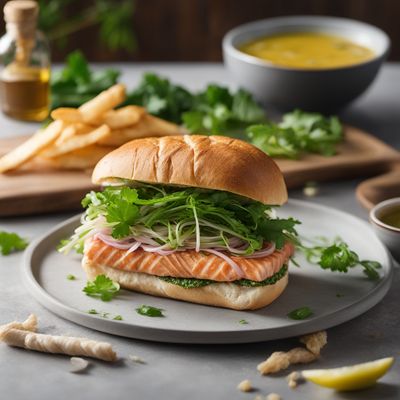
Ingredient
Pickled / marinated vegetables
Tangy and Vibrant Preserves
Pickled or marinated vegetables are a culinary technique that involves preserving vegetables in a brine or marinade solution. This process not only extends their shelf life but also imparts a tangy, acidic flavor that enhances their natural taste. The vegetables, such as cucumbers, carrots, onions, and peppers, retain their crisp texture while absorbing the flavors of the brine or marinade. These preserved vegetables add a refreshing and zesty element to salads, sandwiches, charcuterie boards, and various other dishes.
Origins and history
The practice of pickling and marinating vegetables dates back thousands of years and can be traced to ancient civilizations such as the Mesopotamians, Egyptians, and Chinese. These preservation methods were developed as a means to store vegetables for extended periods, especially during times of scarcity. Over time, pickled and marinated vegetables became an integral part of many culinary traditions around the world, with each culture adding its unique blend of spices and flavors to the preserving liquid.
Nutritional information
Pickled or marinated vegetables are low in calories and fat, making them a healthy addition to meals. They are also a good source of dietary fiber, vitamins, and minerals, depending on the vegetables used. However, it is important to note that the sodium content can vary depending on the brine or marinade used, so individuals on a low-sodium diet should consume them in moderation.
Allergens
May contain allergens depending on the vegetables used and the brine or marinade ingredients.
How to select
When selecting pickled or marinated vegetables, look for jars or containers that are tightly sealed and free from any signs of spoilage, such as bulging lids or mold. The vegetables should appear vibrant in color and retain their crispness. Additionally, read the ingredient list to ensure there are no additives or preservatives that you wish to avoid.
Storage recommendations
To maintain the freshness and quality of pickled or marinated vegetables, store them in a cool, dark place such as a pantry or cellar. Once opened, refrigerate the jar to prolong their shelf life. It is important to use clean utensils when removing the vegetables from the jar to prevent contamination. Proper storage and handling will help preserve their flavor and texture for an extended period.
How to produce
Pickling or marinating vegetables can be done at home using simple ingredients such as vinegar, water, salt, sugar, and spices. By following a basic recipe and sterilizing the jars properly, amateur cooks can create their own flavorful preserves. The process involves washing and preparing the vegetables, heating the brine or marinade ingredients, and then combining them in sterilized jars. The jars are then sealed and left to sit for a period of time to allow the flavors to develop.
Preparation tips
Pickled or marinated vegetables can be enjoyed straight from the jar as a tangy and refreshing snack. They can also be used as a topping for sandwiches, burgers, or tacos, adding a burst of flavor and crunch. Incorporate them into salads, pasta dishes, or grain bowls for an extra zing. Additionally, they make a great accompaniment to charcuterie boards, providing a vibrant and tangy contrast to cured meats and cheeses.
Culinary uses
Pickled or marinated vegetables are widely used in various cuisines around the world. They are a common component of Mediterranean mezze platters, Mexican tacos and burritos, Vietnamese banh mi sandwiches, and Korean banchan. Their versatility allows them to be incorporated into a wide range of dishes, adding a tangy and vibrant element.
Availability
Pickled or marinated vegetables are available in most grocery stores and supermarkets, often found in the condiment or canned goods section. They can also be found in specialty stores or farmers markets that focus on artisanal or homemade products. The availability may vary depending on the region and the demand for preserved vegetables.
More ingredients from this category
Recipes using Pickled / marinated vegetables » Browse all

Pan con lechón Lucanian-style
Savory Lucanian Pulled Pork Sandwich

Grilled Pork Rice Bowl
Sizzling Vietnamese Grilled Pork Rice Bowl

Chiuchow-style Pizza Carrettiera
Chiuchow-inspired Pizza Carrettiera: A Fusion of Italian and Chiuchow Flavors

Xinjiang-style Spiced Lamb Stew
Silk Road Delight: Xinjiang Spiced Lamb Stew

Okinawan Rice and Beans with Braised Chicken
Savory Harmony: Okinawan Rice and Beans with Tender Braised Chicken

Grilled Chicken Thighs with Sticky Rice Dumplings
Savory Grilled Chicken Delight with Sticky Rice Dumplings

Crispy Fried Elephant Ear Fish
Golden Delight: Crispy Fried Elephant Ear Fish with a Vietnamese Twist

Authentic Italian-American Muffuletta
Savory Delight: The Ultimate Italian-American Muffuletta Sandwich

Galician-style Fish Sandwich
Mar de Galicia: A Taste of the Sea in a Sandwich

Taiwanese-style Katsudon
Crispy Pork Cutlet Rice Bowl with Taiwanese Flavors

Latvian-style Gyros
Riga's Delight: Latvian-inspired Gyros

Northern European Seafood Platter
Nordic Delights: Seafood Extravaganza
